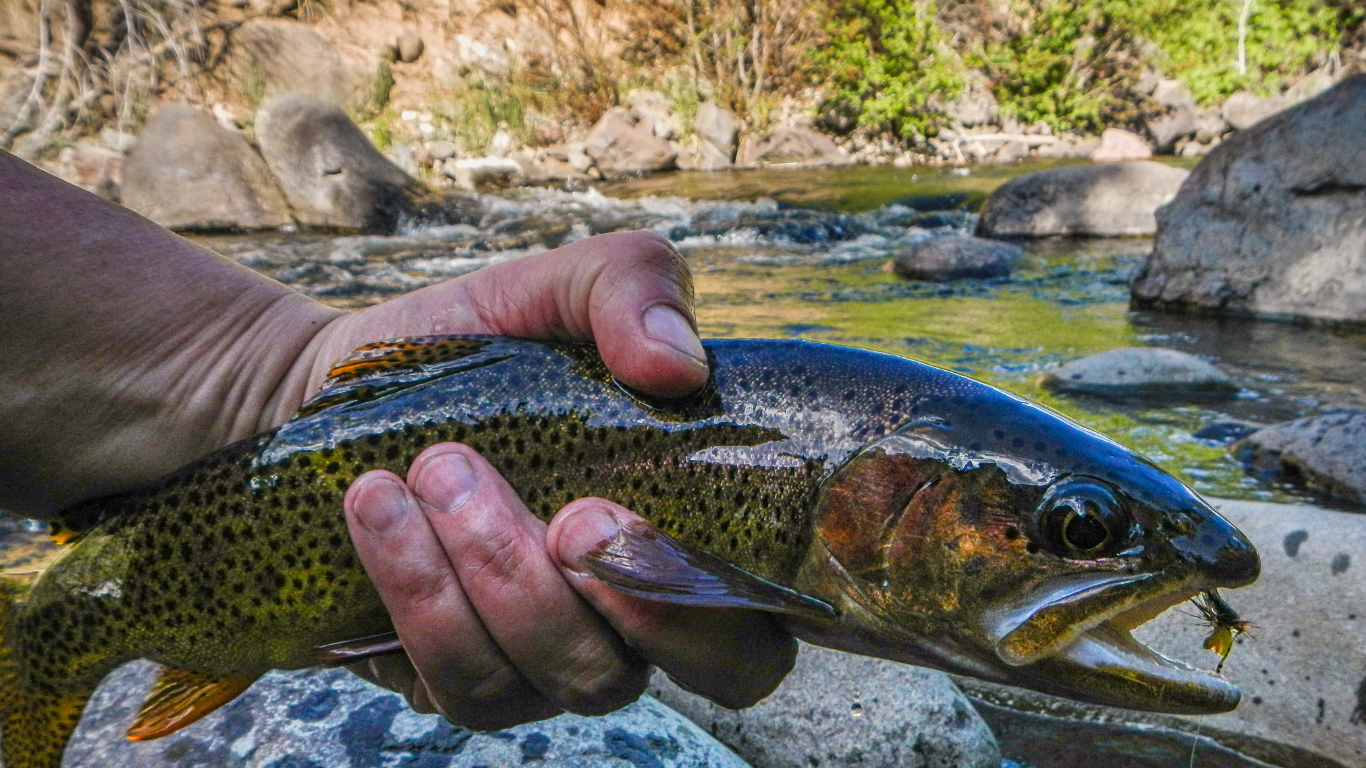Listen to the Podcast!
Why the High Country Delivers in Summer

High elevation streams and creeks are some of the best places to throw dry flies in Colorado once runoff subsides. These alpine waters stay cool, clear, and oxygen-rich—even when valley rivers run low and warm. Less pressure and smaller water make them a dry fly angler’s dream.
When to Fish Colorado’s High Country
- Mid-June through early August is prime
- Post-runoff flows stabilize and clear up
- Water temps below 65°F keep trout active
- Cloud cover or late afternoon shadows often trigger surface activity
Top Streams Worth the Hike
-1.jpg?width=800&height=360&name=20240616_075511%20(1)-1.jpg)
St. Vrain Forks
Cutthroat and brook trout hold in pockets and plunge pools with easy access via Brainard Lake or Wild Basin.
Headwaters in Rocky Mountain National Park
Classic cutthroat habitat. Small dries bring up fish all day.
Alpine Creeks off Highway 285 and I-70
Creeks above Leadville, near Fairplay, and through the Holy Cross Wilderness offer quick-hit action with little competition.
Best Dry Flies for Alpine Water
- Parachute Adams (#16–22): Imitates BWOs, PMDs, and general mayflies
- Elk Hair Caddis (#14–118): Stays high and visible in fast water
- Pale Morning Dun (#16–18): Especially productive in late June and early July
- Hoppers, ants, beetles (#10–16): Mid- to late-summer terrestrials that draw reaction eats
If you’re hiking light, carry a half dozen each and vary the size before the color.
High Country Tactics That Work
Use short casts and tight drifts
Drag-free is the rule. Fish aren’t spooky, but they will refuse bad presentations in clear water.
Fish upstream, quietly
Avoid skyline exposure. Step lightly and wear dull-colored clothing.
Set early, but not too early
Many strikes are subtle—especially from cutthroat or brook trout. If you see a nose or swirl, lift gently.
Adjust your tippet
5X or 6X fluorocarbon helps your fly land soft and float clean. Long leaders (9–12 ft) help get past surface tension and drag.
Don’t overcomplicate it
These trout are opportunists. If they’re not eating dries, they’re either spooked or not feeding. Move upstream.
FAQ: Colorado High Country Dry Fly Fishing
1. What counts as “high country” fly fishing in Colorado?
Any stream or creek above 8,000 feet with cold, clear water and minimal human traffic. Most feature wild or native trout populations.
2. What time of year is best?
Mid-June through early August. Earlier if snowmelt was light, later if runoff hangs on. The key is stable, clear water.
3. Do I need different gear for alpine streams?
Not really. A 3-weight or 4-weight rod, floating line, 5X–6X tippet, and a small dry fly box will do the trick.
4. Are terrestrials effective in the high country?
Yes. Once grasshoppers, beetles, and ants show up near streamside meadows (usually July), trout key in fast.
5. How important is stealth?
It matters more than fly pattern. In skinny alpine water, fish are often feeding up—but they’ll vanish at the sound of boots on rocks.
6. Can I use Euro or tight-line nymphing here?
You can, but you’ll miss the point. This is dry fly territory. If you have to go subsurface, a single nymph under a high-floating dry keeps it honest.
.png?width=300&height=100&name=Copy%20of%20Rise%20Beyond%20Logo%2012.31.24%20(300%20x%20100%20px).png)
.png)


-1.png)